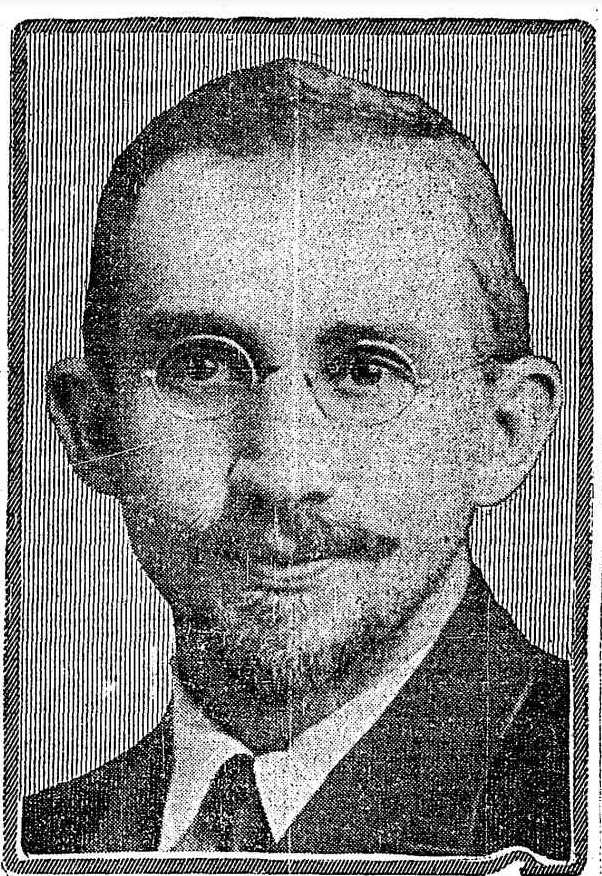On March 28, 1915, the first American citizen is killed in the eight-month-old European conflict that would become known as the First World War.
Leon Thrasher, a 31-year-old mining engineer and native of Massachusetts, drowned when a German submarine, the U-28, torpedoed the cargo-passenger ship Falaba, on its way from Liverpool to West Africa, off the coast of England. Of the 242 passengers and crew on board the Falaba, 104 drowned. Thrasher, who was employed on the Gold Coast in British West Africa, was returning to his post there from England as a passenger on the ship.
The Germans claimed that the submarine's crew had followed all protocol when approaching the Falaba, giving the passengers ample time to abandon ship and firing only when British torpedo destroyers began to approach to give aid to the Falaba. The British official press report of the incident claimed that the Germans had acted improperly: "It is not true that sufficient time was given the passengers and the crew of this vessel to escape. The German submarine closed in on the Falaba, ascertained her name, signaled her to stop, and gave those on board five minutes to take to the boats. It would have been nothing short of a miracle if all the passengers and crew of a big liner had been able to take to their boats within the time allotted."
The sinking of the Falaba, and Thrasher's death specifically, was mentioned in a memorandum sent by the U.S. government—drafted by President Woodrow Wilson himself—to the German government after the German submarine attack on the British passenger ship Lusitania on May 7, 1915, in which 1,201 people were drowned, including 128 Americans. The note struck a clear warning tone, calling for the U.S. and Germany to come to a "clear and full understanding as to the grave situation which has resulted" from the German policy of unrestricted submarine warfare. Germany abandoned the policy shortly thereafter; its renewal, in early 1917, provided the final impetus for U.S. entry into World War I that April.
This information was taken from History Channel website: http://www.history.com/this-day-in-history.do?action=tdihArticleCategory&id=355&HPF_rid=14185079&HPF_mid=2159_T1_Url24
∼First American killed in World War I.
Mr. Thrasher was thirty-one years old at the time of his death.
His remains were discovered July 11, 1915 (106 days after the sinking) on the shore at Stradbally, Ireland. Thrasher's body was originally thought to be a victim from the sinking of the Lusitania which has been torpedoed on May 7, 1915 and was listed as "body #248."
On March 28, 1915, the first American citizen is killed in the eight-month-old European conflict that would become known as the First World War.
Leon Thrasher, a 31-year-old mining engineer and native of Massachusetts, drowned when a German submarine, the U-28, torpedoed the cargo-passenger ship Falaba, on its way from Liverpool to West Africa, off the coast of England. Of the 242 passengers and crew on board the Falaba, 104 drowned. Thrasher, who was employed on the Gold Coast in British West Africa, was returning to his post there from England as a passenger on the ship.
The Germans claimed that the submarine's crew had followed all protocol when approaching the Falaba, giving the passengers ample time to abandon ship and firing only when British torpedo destroyers began to approach to give aid to the Falaba. The British official press report of the incident claimed that the Germans had acted improperly: "It is not true that sufficient time was given the passengers and the crew of this vessel to escape. The German submarine closed in on the Falaba, ascertained her name, signaled her to stop, and gave those on board five minutes to take to the boats. It would have been nothing short of a miracle if all the passengers and crew of a big liner had been able to take to their boats within the time allotted."
The sinking of the Falaba, and Thrasher's death specifically, was mentioned in a memorandum sent by the U.S. government—drafted by President Woodrow Wilson himself—to the German government after the German submarine attack on the British passenger ship Lusitania on May 7, 1915, in which 1,201 people were drowned, including 128 Americans. The note struck a clear warning tone, calling for the U.S. and Germany to come to a "clear and full understanding as to the grave situation which has resulted" from the German policy of unrestricted submarine warfare. Germany abandoned the policy shortly thereafter; its renewal, in early 1917, provided the final impetus for U.S. entry into World War I that April.
This information was taken from History Channel website: http://www.history.com/this-day-in-history.do?action=tdihArticleCategory&id=355&HPF_rid=14185079&HPF_mid=2159_T1_Url24
∼First American killed in World War I.
Mr. Thrasher was thirty-one years old at the time of his death.
His remains were discovered July 11, 1915 (106 days after the sinking) on the shore at Stradbally, Ireland. Thrasher's body was originally thought to be a victim from the sinking of the Lusitania which has been torpedoed on May 7, 1915 and was listed as "body #248."
Family Members
Sponsored by Ancestry
Advertisement
Advertisement










